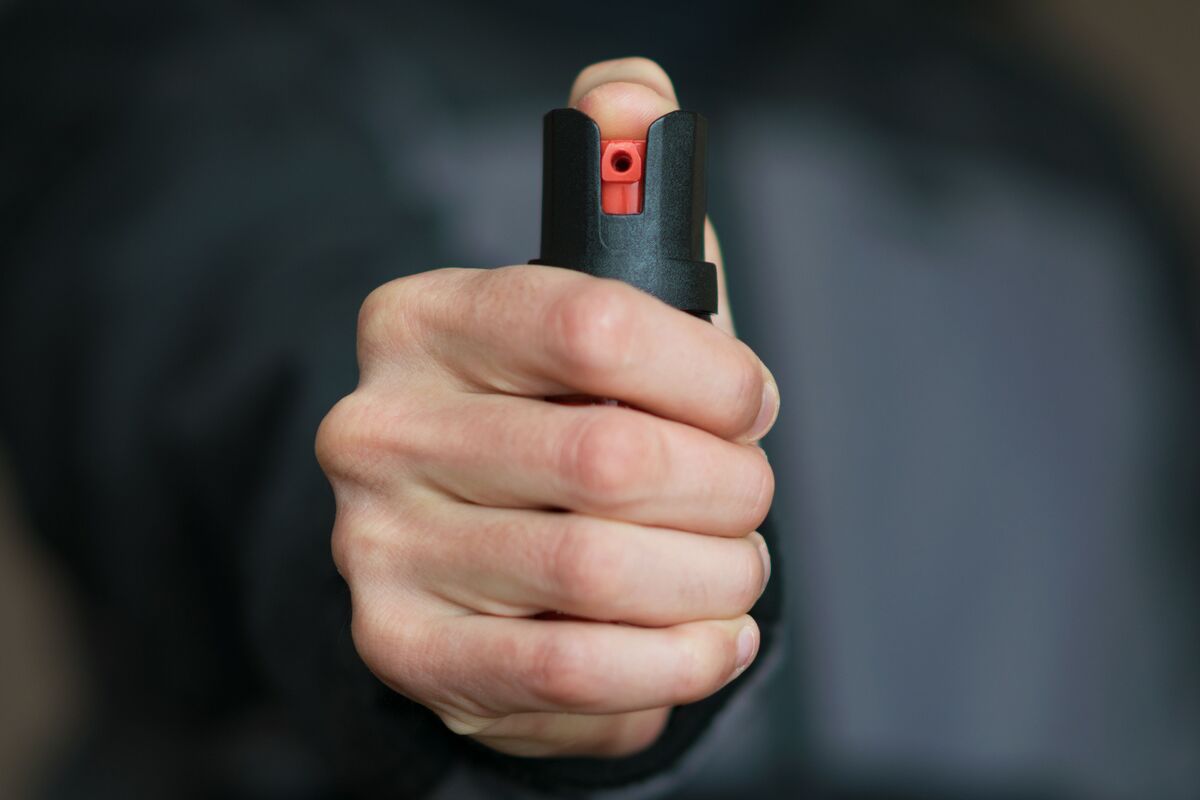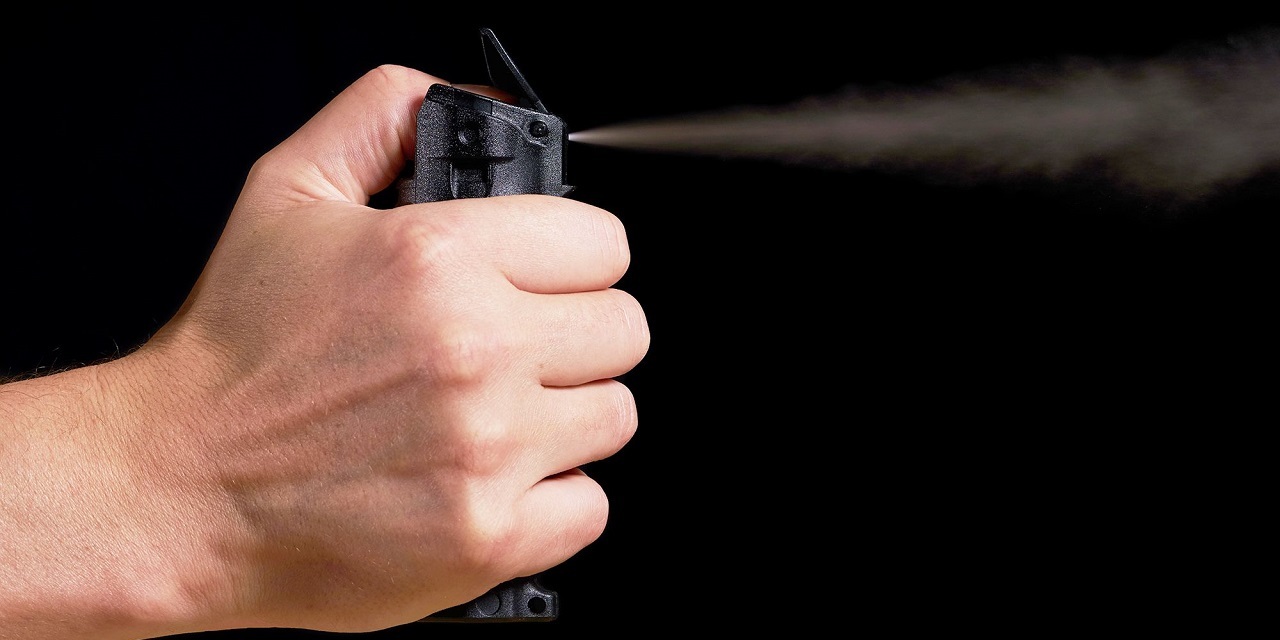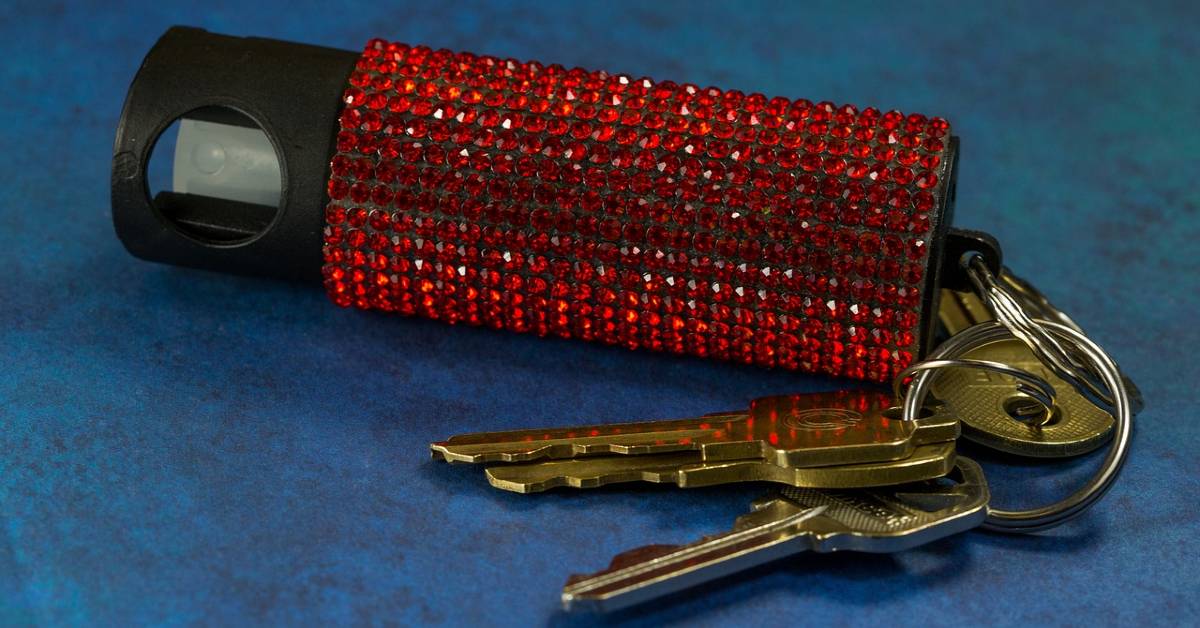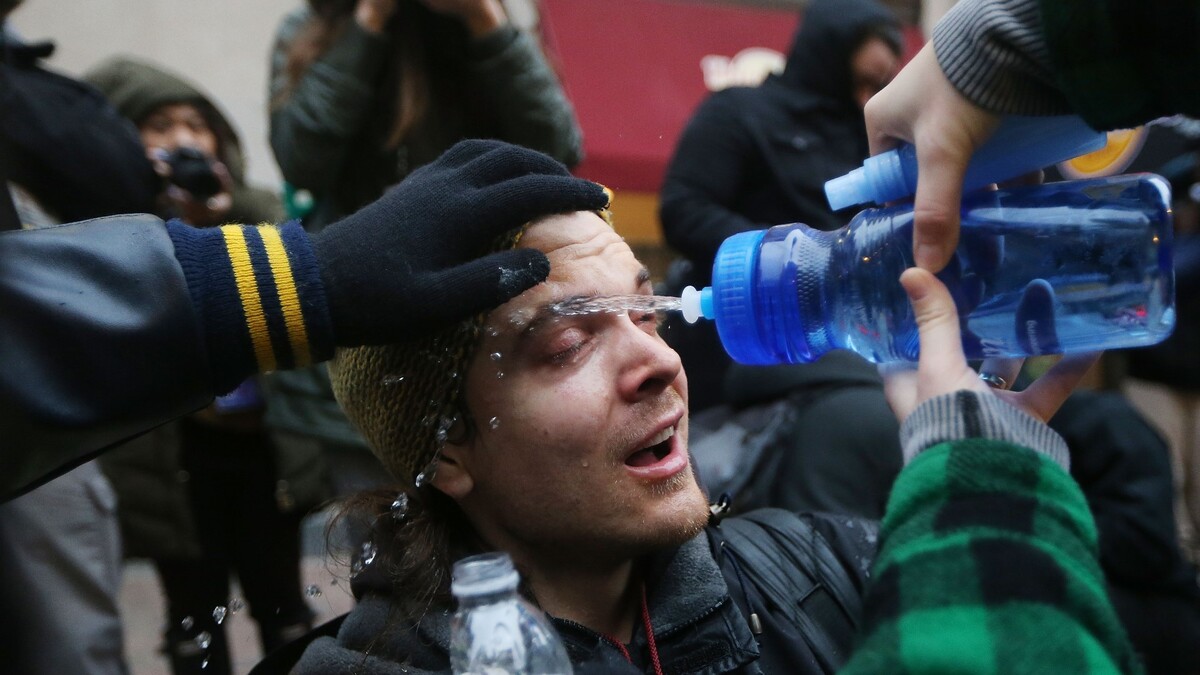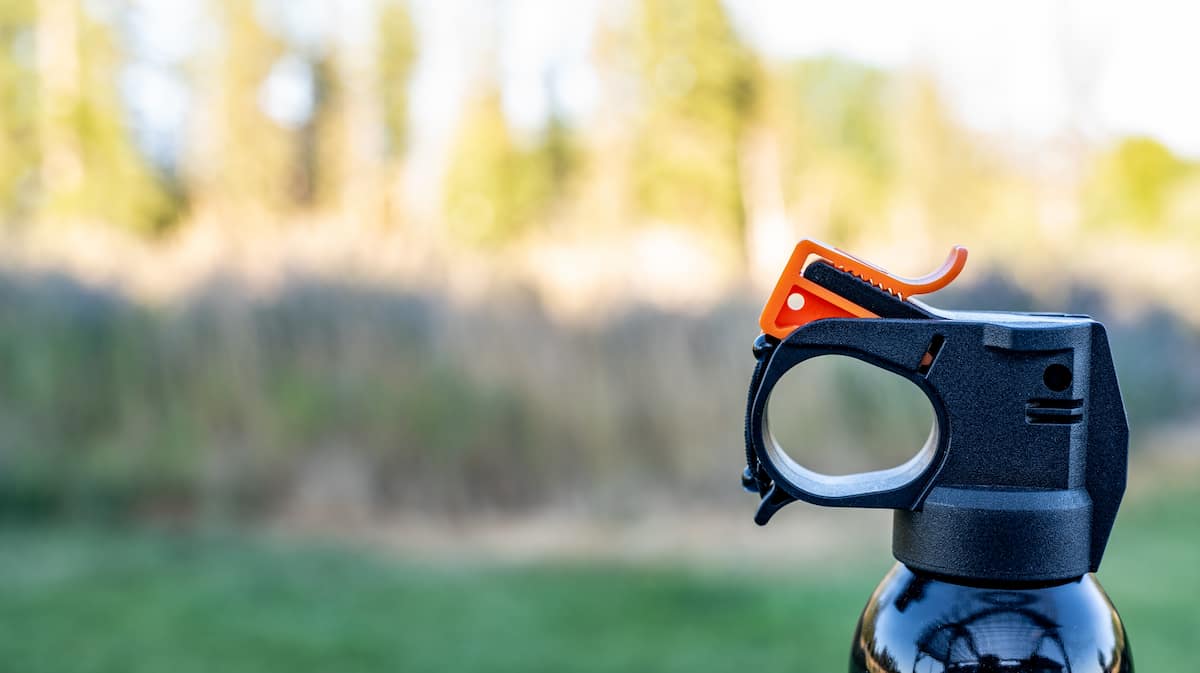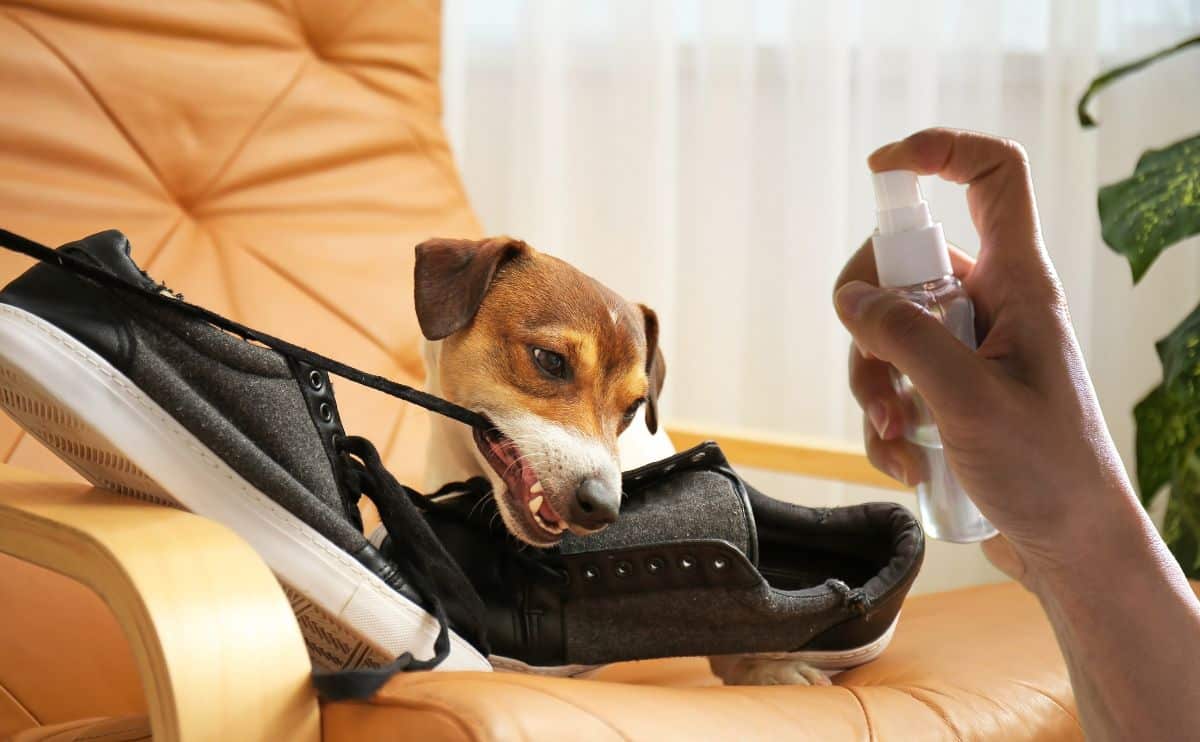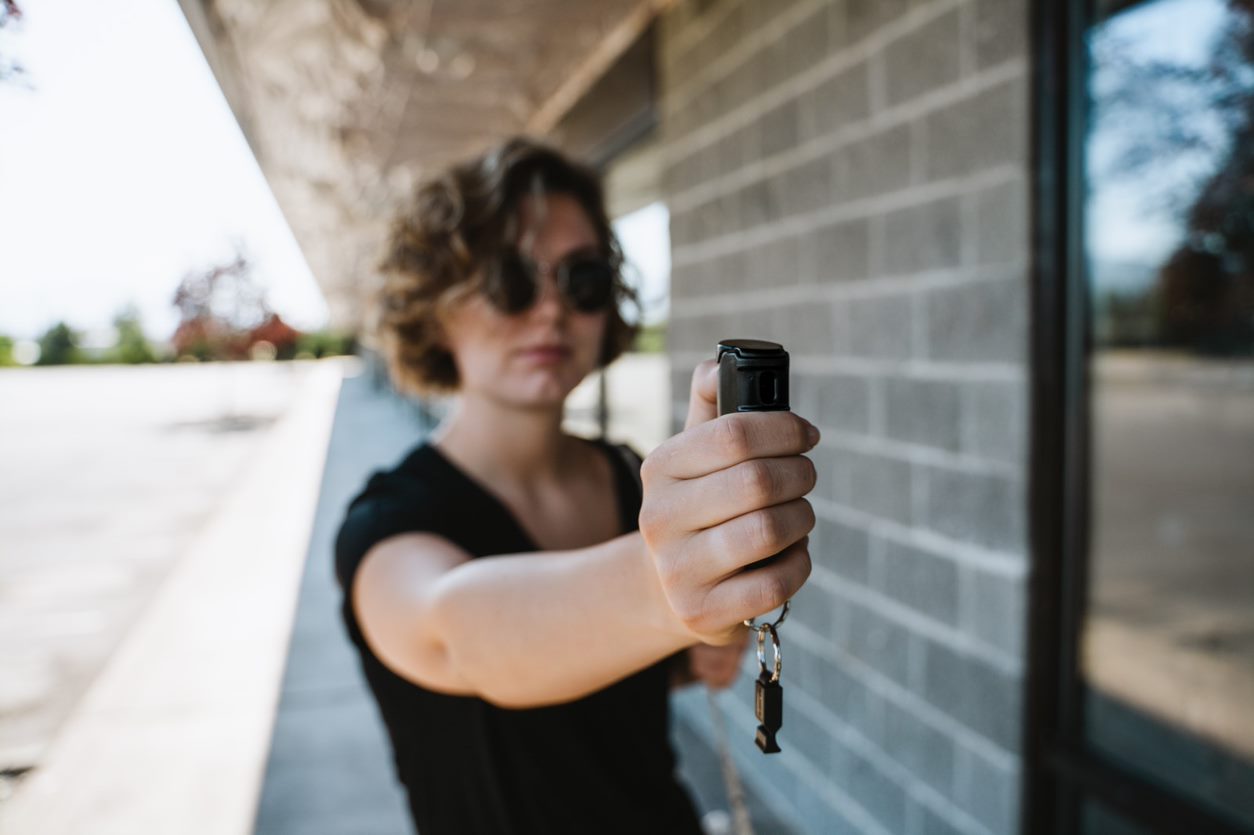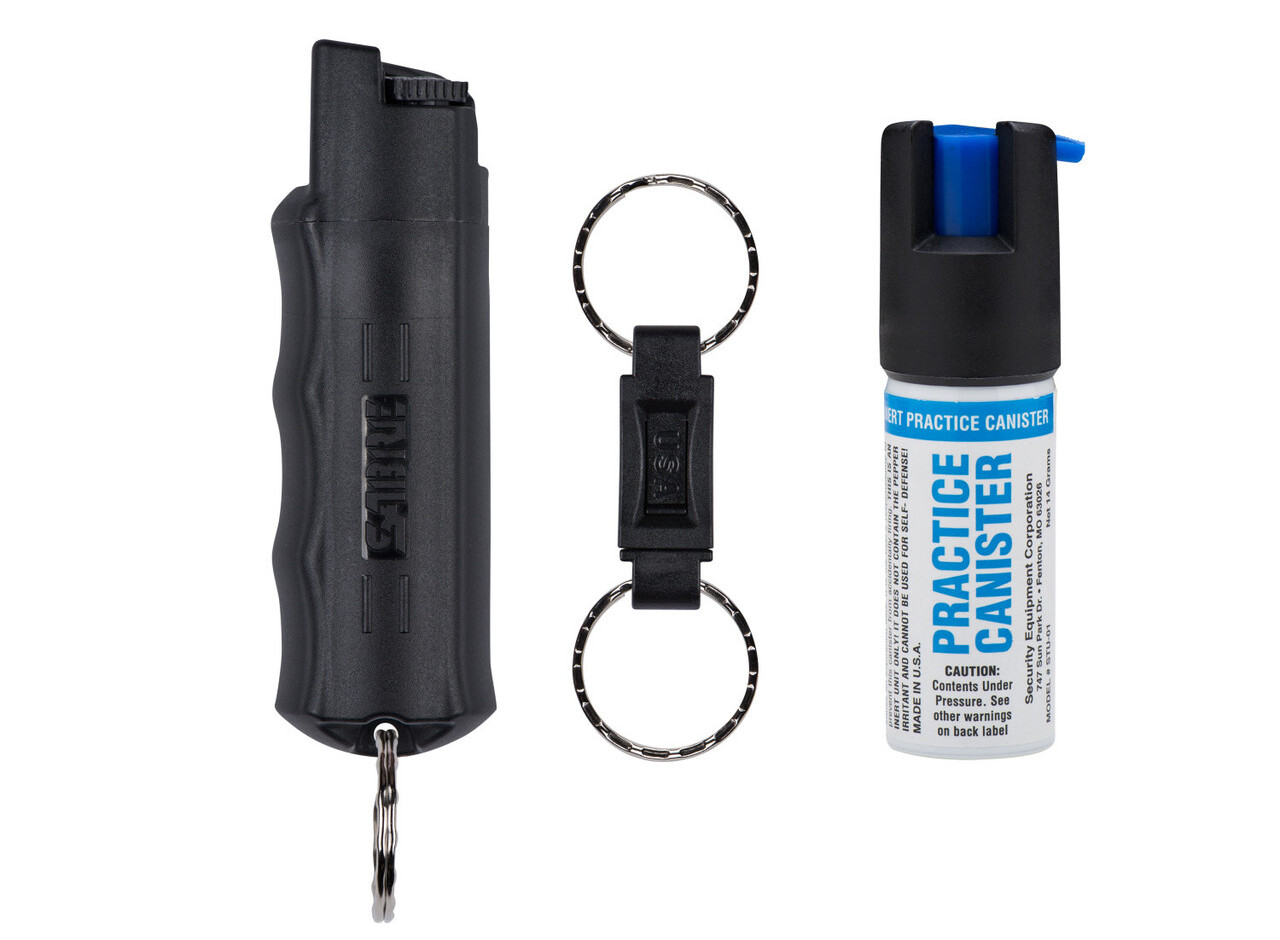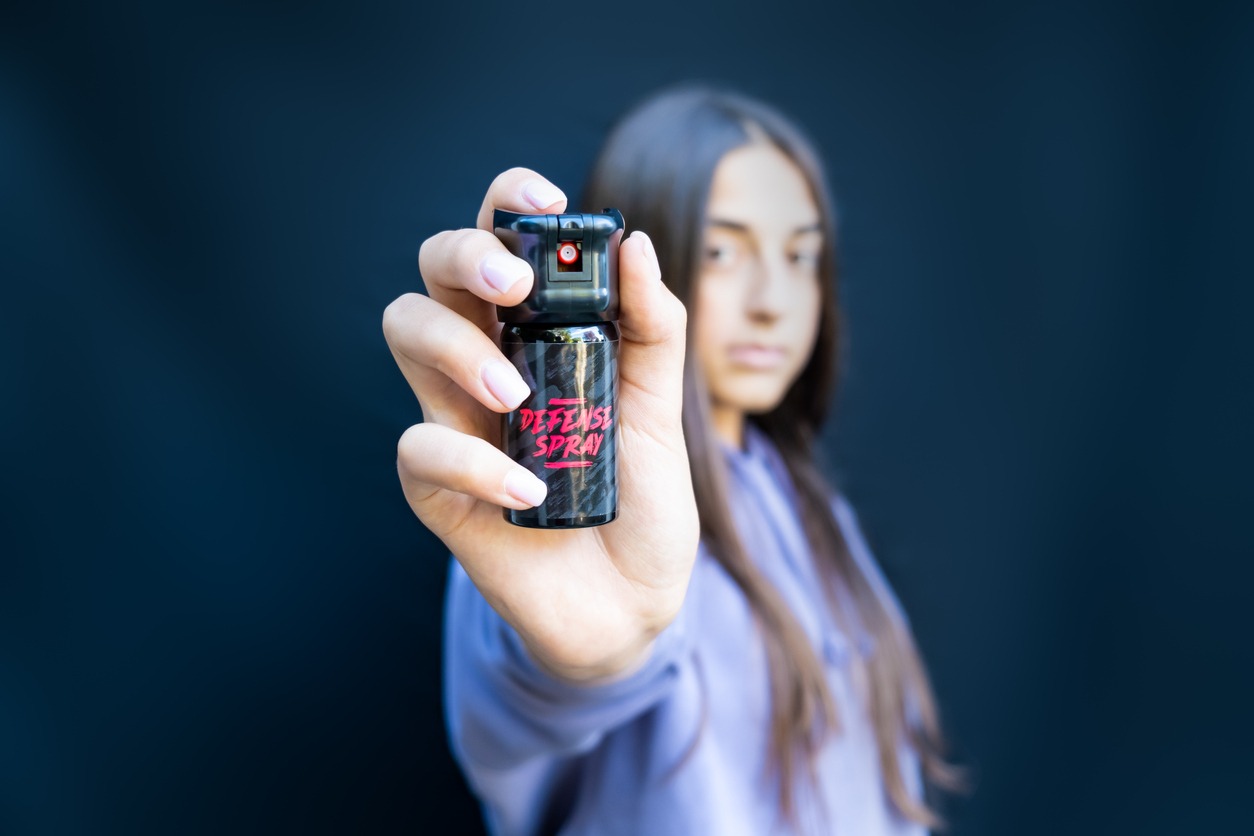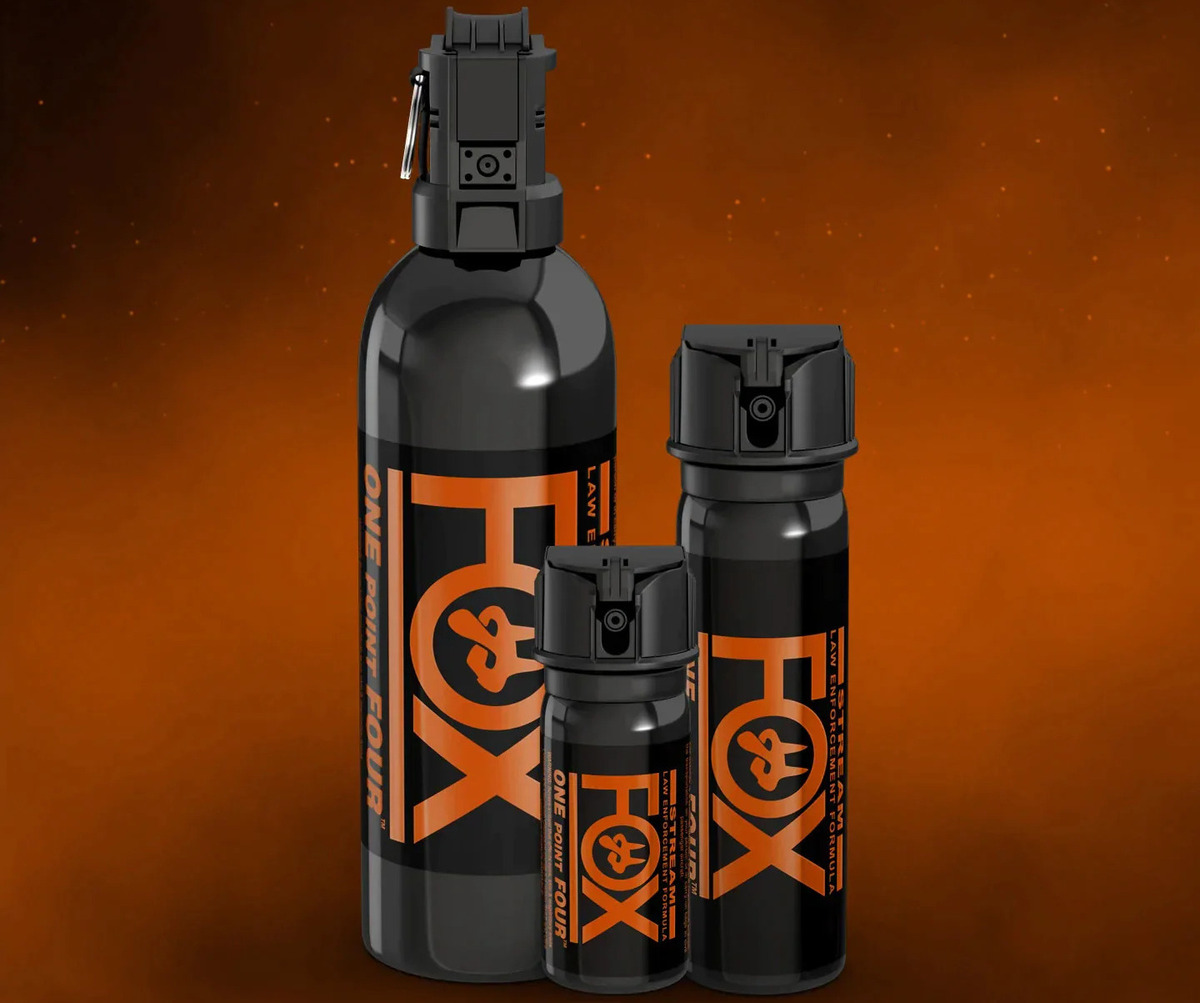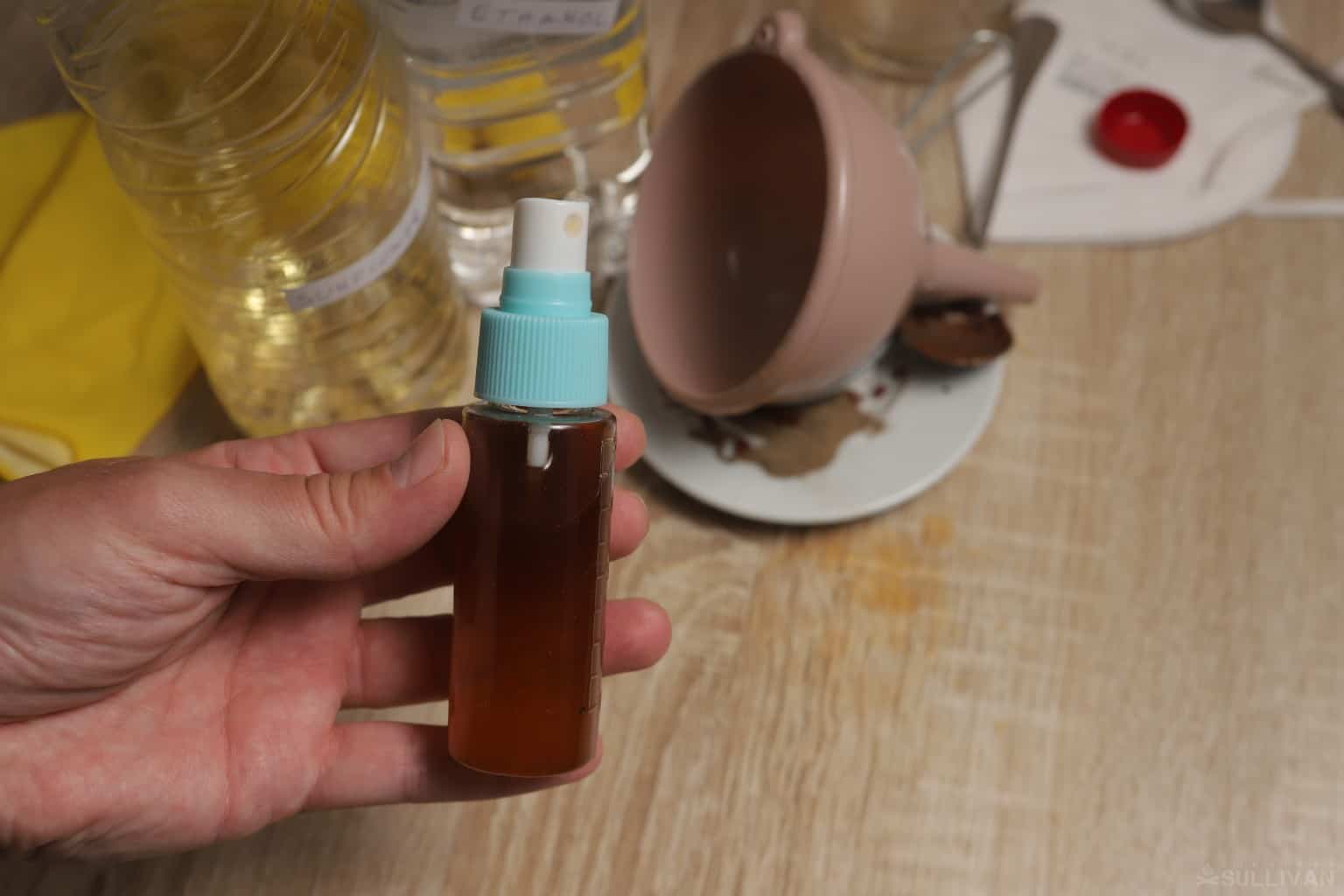Home>Home Security and Surveillance>How Often To Replace Pepper Spray
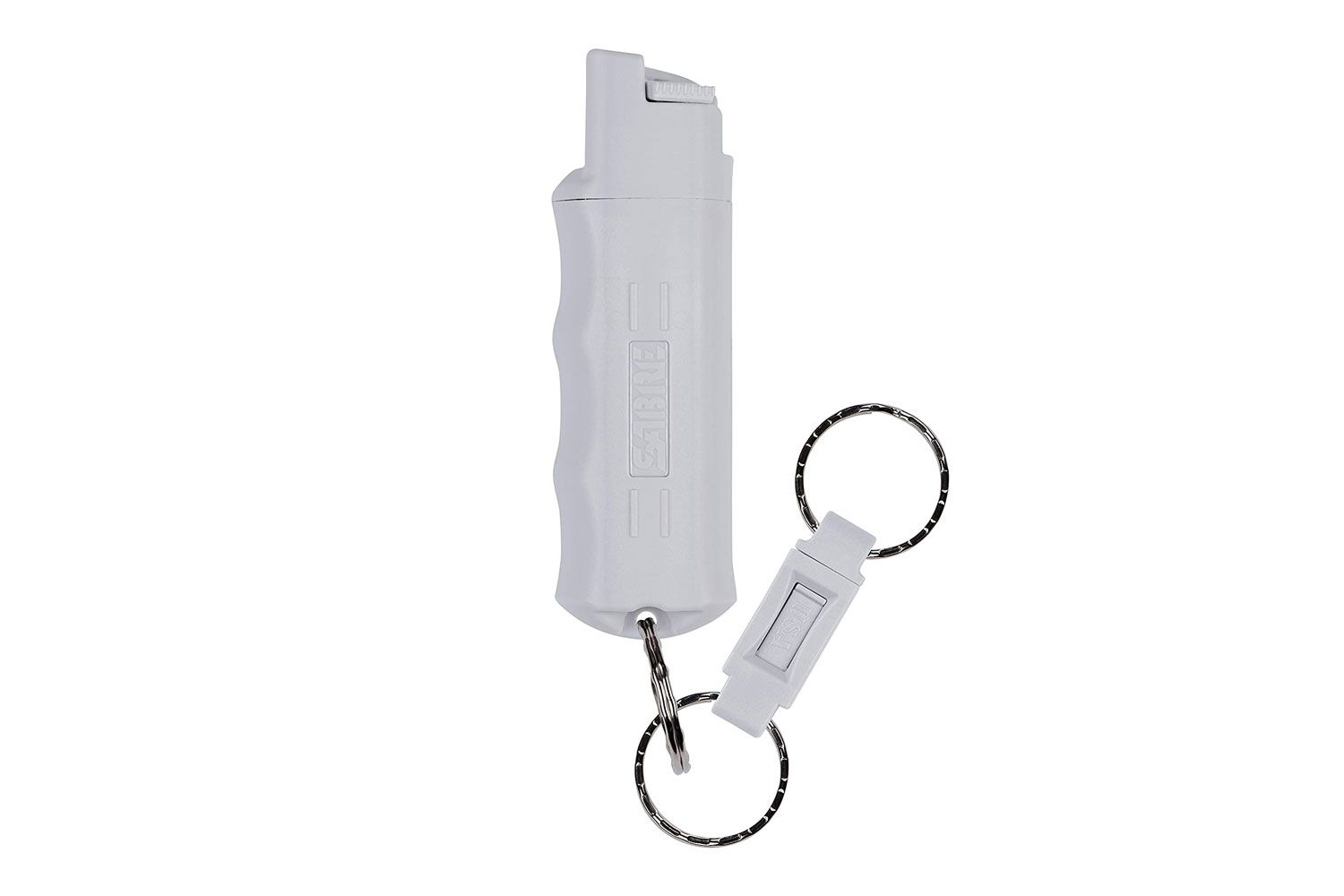

Home Security and Surveillance
How Often To Replace Pepper Spray
Modified: March 7, 2024
Discover how often you should replace your pepper spray for optimal home security and surveillance. Find out the best practices and ensure your safety.
(Many of the links in this article redirect to a specific reviewed product. Your purchase of these products through affiliate links helps to generate commission for Storables.com, at no extra cost. Learn more)
Introduction
Pepper spray is a popular self-defense tool that can provide individuals with a sense of security and peace of mind. Whether you’re walking alone at night or want an extra layer of protection at home, pepper spray can serve as a reliable deterrent against potential threats.
However, like any other tool or product, pepper spray has a limited lifespan. Over time, its effectiveness can diminish, making it crucial to understand when and how often to replace your pepper spray canister.
In this article, we will explore the various factors that can affect the lifespan of pepper spray, discuss its shelf life, provide tips on determining when to replace it, highlight the importance of regular maintenance and inspection, and guide you on the proper disposal of expired pepper spray.
By the end of this article, you will have a comprehensive understanding of how to keep yourself safe by ensuring your pepper spray is always in optimal condition.
Key Takeaways:
- Regularly check your pepper spray for signs of expiration or malfunction, such as changes in color, consistency, or odor, to ensure it remains effective for your safety.
- When disposing of expired pepper spray, follow local regulations, empty the canister safely, and consult with waste management for proper disposal procedures to protect the environment and public safety.
Read more: How To Spray Pepper Spray
Factors affecting pepper spray lifespan
Several factors can impact the lifespan and effectiveness of pepper spray. Understanding these factors will help you determine when it’s time to replace your canister:
- Exposure to extreme temperatures: Pepper spray canisters should be kept in moderate temperatures, away from direct sunlight and excessive heat or cold. Exposure to extreme temperatures can cause the canister to leak or lose its potency.
- Expiration date: Like most products, pepper spray has an expiration date. It typically ranges from two to five years, depending on the brand and formulation. Over time, the potency of the active ingredient, typically capsaicin, can diminish, making the spray less effective.
- Storage conditions: Proper storage is essential to maintain the longevity of pepper spray. Storing it in a cool, dry place, away from high humidity and moisture, will help prevent degradation and ensure it remains effective for as long as possible.
- Canister quality: The quality of the pepper spray canister itself can also impact its lifespan. Canisters made from durable materials and featuring proper seals are less likely to deteriorate over time, ensuring the spray remains potent.
- Usage: The frequency of use can also affect the lifespan of pepper spray. Regular practice or accidental discharge can deplete the canister faster than anticipated. It’s important to familiarize yourself with the instructions and only use it when necessary.
Understanding these factors will help you assess the condition of your pepper spray and determine if it needs to be replaced. However, even if you take all the necessary precautions, it’s still crucial to check the expiration date and regularly inspect your pepper spray to ensure it is functioning correctly.
Shelf life of pepper spray
The shelf life of pepper spray can vary based on several factors, including the brand, formulation, and storage conditions.
In general, pepper spray typically has an expiration date that ranges from two to five years from the date of manufacture. It’s essential to check the label or packaging for this information, as using expired pepper spray can reduce its effectiveness and put your safety at risk.
The active ingredient in pepper spray, capsaicin, is a naturally derived chemical found in chili peppers. Although it is a powerful irritant, its potency can weaken over time. Exposure to light, heat, or moisture can expedite this degradation process.
Some pepper spray manufacturers include an expiration date directly on the canister, ensuring users know when it’s time for a replacement. It’s important to note that the effectiveness of the spray may gradually diminish even before the expiration date.
Remember that pepper spray is meant to incapacitate an assailant temporarily by causing intense pain and inflammation in the eyes, nose, and throat. To ensure your safety and the effectiveness of the spray, it’s recommended to replace it within the suggested shelf life or when it shows signs of deterioration.
Additionally, it’s crucial to keep track of the purchase date of your pepper spray. If you cannot find a specified expiration date, it’s generally recommended to replace it within two to three years to maintain its potency.
By proactively monitoring the shelf life of your pepper spray and replacing it when necessary, you can ensure that you have a reliable and effective self-defense tool at your disposal.
Determining when to replace pepper spray
Knowing when to replace your pepper spray is crucial to ensure your safety. While the expiration date is a reliable guideline, there are other indicators to consider:
- Expiration date: The expiration date printed on the pepper spray canister is the most straightforward way to determine when it needs to be replaced. If the expiration date has passed, it’s time to purchase a new canister.
- Loss of pressurization: Over time, the canister may lose its pressurization, making it difficult or even impossible to dispense the pepper spray. Shake the canister and test it in a controlled area to see if it disperses smoothly. If you notice a lack of pressure or an inconsistent spray pattern, it’s time to replace it.
- Change in color or consistency: Inspect your pepper spray visually. If you notice a change in color, such as discoloration or cloudiness, or if the liquid seems thicker or clumpy, these signs may indicate that the pepper spray has deteriorated and is no longer effective. In such cases, it’s best to replace it.
- Unpleasant odor: If your pepper spray has a strong, unpleasant odor or a noticeable change in smell, it may indicate that the formulation has degraded. Pepper spray should have a distinctive smell, but any strange or foul odor suggests a need for replacement.
- Test expiration: Manufacturers often provide test expiration sprays, allowing you to experience the effects before purchasing. If you’re uncertain about the condition of your pepper spray or its effectiveness, consider testing one of these sprays to ensure it still functions as intended.
It’s essential to replace your pepper spray promptly if you encounter any of these signs. Using an expired or malfunctioning canister can put you at risk in a potentially dangerous situation. Stay vigilant and regularly inspect your pepper spray to ensure its reliability and effectiveness.
Remember, prevention is key when it comes to personal safety. By replacing your pepper spray as needed, you can maintain a reliable means of self-defense and peace of mind.
Replace pepper spray every 1-2 years, or according to the expiration date on the canister. Over time, the potency of the spray can diminish, so it’s important to have a fresh canister for effective self-defense.
Regular maintenance and inspection of pepper spray cans
To ensure the optimal performance of your pepper spray, it’s crucial to engage in regular maintenance and inspection. Here are some key practices to follow:
- Check the expiration date: Periodically review the expiration date on your pepper spray can. If it has expired or is approaching the expiration date, make note of it and plan to replace it soon.
- Inspect the canister: Look for any signs of damage, such as dents, cracks, or leaks. If you notice any damage, it’s essential to replace the canister immediately, as these issues can compromise the spray’s effectiveness and safety.
- Test the sprayer: Regularly test your pepper spray canister in a safe and controlled environment. Activate the sprayer to ensure it dispenses a consistent and forceful spray. Pay attention to the spray pattern and reach to ensure it meets your expectations. If you notice any irregularities or a diminished spray, consider replacing the canister.
- Shake the canister: Periodically shake the pepper spray canister to ensure the contents are well-mixed. This action helps maintain the potency of the active ingredients, ensuring maximum effectiveness when needed.
- Store properly: Proper storage is vital for preserving the lifespan of your pepper spray. Keep it in a cool, dry place away from direct sunlight, extreme temperatures, and excessive humidity. Avoid storing it in areas prone to moisture, such as bathrooms or kitchens, as this can lead to deterioration.
- Follow manufacturer guidelines: Familiarize yourself with the manufacturer’s instructions and recommendations for maintenance and storage. Each brand may have specific guidelines, and following them will help ensure the longevity and effectiveness of your pepper spray.
- Keep it accessible: While regular maintenance and inspection are important, it’s equally crucial to keep your pepper spray easily accessible. In emergency situations, quick access can make a significant difference. Consider carrying it in a designated pocket, bag, or holster that allows for easy retrieval.
By incorporating these maintenance and inspection practices into your routine, you can have confidence in the reliability and effectiveness of your pepper spray. Remember to prioritize your safety and the safety of those around you by regularly maintaining and checking your self-defense tools.
Read more: How To Store Pepper Spray
Common signs of expired or malfunctioning pepper spray
Regularly checking your pepper spray for signs of expiration or malfunction is crucial for your safety. Here are some common indications that your pepper spray may be expired or not functioning properly:
- Lack of potency: If you have used your pepper spray before and notice a significant decrease in its effectiveness, it may be expired. Pepper spray should cause intense irritation and incapacitate an attacker temporarily. If it fails to produce the desired effects, it’s time to replace it.
- Change in color or consistency: If you observe any changes in the color, such as discoloration or cloudiness, or notice that the liquid appears thicker or clumpy, it could indicate that the pepper spray has deteriorated. These changes can affect its potency and make it less effective when used.
- Foul or unusual odor: Pepper spray typically has a distinctive, pungent odor. If you detect any unusual or unpleasant smells, it could signify a degradation of the formulation. Any change in odor should prompt you to replace the canister.
- Leaking or damaged canister: Inspect the canister for any signs of leakage, such as wet spots or residue. If you notice any leaks or damage, it’s essential to replace the canister immediately. A leaking canister compromises the spray’s effectiveness and can also pose a safety risk.
- Malfunctioning spray nozzle: Test the sprayer regularly to ensure it dispenses the spray effectively. If the spray nozzle becomes clogged, produces a weak stream, or fails to spray at all, it indicates a malfunction. A malfunctioning nozzle can hinder your ability to defend yourself during a critical situation.
- Expired expiration date: The expiration date on the canister is a clear indicator of when it should be replaced. If the date has passed, it’s crucial not to rely on the pepper spray anymore, as its effectiveness may have significantly diminished.
Pay attention to these signs and promptly address any issues you notice. Your personal safety depends on having a reliable and effective self-defense tool. Regularly checking for these signs of expiration or malfunction ensures that you are always prepared with a functioning pepper spray.
Proper disposal of expired pepper spray
Disposing of expired pepper spray properly is essential to avoid any potential hazards. Here are some guidelines to follow for the safe disposal of expired or malfunctioning pepper spray:
- Check local regulations: Start by familiarizing yourself with the regulations in your area regarding the disposal of chemical products. Some jurisdictions may have specific guidelines or restrictions on how to handle and dispose of pepper spray.
- Empty the canister: If possible, safely discharge the pepper spray outdoors in a well-ventilated area, away from people, animals, and vegetation. Make sure to aim the spray away from your face and follow the instructions provided by the manufacturer for safe discharge.
- Secure the canister: Once the canister is empty, ensure it is securely closed and cannot accidentally discharge. This step is crucial to prevent any accidental exposure or harm during the disposal process.
- Wrap the canister: To further secure the canister, you may choose to wrap it in multiple layers of plastic bags or use a sealable container. This additional layer of protection helps prevent leaks or punctures during transportation and disposal.
- Consult local waste management: Contact your local waste management facility or hazardous waste disposal facility for guidance on how to dispose of the expired pepper spray safely. They will provide specific instructions on whether to dispose of it with regular household waste or if it requires special handling or dedicated drop-off locations.
- Do not incinerate or puncture: It is crucial not to incinerate or puncture the canister, as this can cause the release of potentially harmful chemicals. Follow the instructions provided by your local waste management facility to ensure proper disposal without risking harm to yourself, others, or the environment.
- Keep records: As a precautionary measure, consider keeping a record of the disposal process, including the date, method, and location. This documentation can be helpful if there are any inquiries or concerns in the future.
Remember, proper disposal of expired pepper spray is essential for environmental protection and public safety. By following these guidelines and adhering to local regulations, you can ensure that your expired pepper spray is disposed of safely and responsibly.
Conclusion
Pepper spray is a valuable tool for personal safety and self-defense. However, it’s crucial to understand that pepper spray has a limited lifespan and requires regular maintenance and inspection to ensure its effectiveness. By considering factors such as exposure to extreme temperatures, expiration dates, storage conditions, canister quality, and usage, you can determine when it’s time to replace your pepper spray.
Regular maintenance and inspection of your pepper spray canisters help ensure that they are functioning correctly when you need them most. Checking the expiration date, inspecting the canister for damage or leaks, testing the sprayer, and proper storage all contribute to maintaining the longevity of your pepper spray.
If you notice common signs of expired or malfunctioning pepper spray, such as loss of potency, changes in color or consistency, foul odor, leaks, or malfunctioning spray nozzles, it’s essential to replace your canister promptly to maintain your safety.
When it comes time to dispose of expired pepper spray, it’s crucial to follow local regulations and guidelines for proper disposal. Empty the canister safely, secure it, and consult with your local waste management facility for proper disposal procedures.
Remember, your personal safety is of utmost importance. By understanding the factors affecting pepper spray lifespan, regularly maintaining and inspecting your canisters, and disposing of them properly, you can ensure that your pepper spray remains a reliable self-defense tool. Stay vigilant, stay prepared, and prioritize your safety at all times.
Frequently Asked Questions about How Often To Replace Pepper Spray
Was this page helpful?
At Storables.com, we guarantee accurate and reliable information. Our content, validated by Expert Board Contributors, is crafted following stringent Editorial Policies. We're committed to providing you with well-researched, expert-backed insights for all your informational needs.
